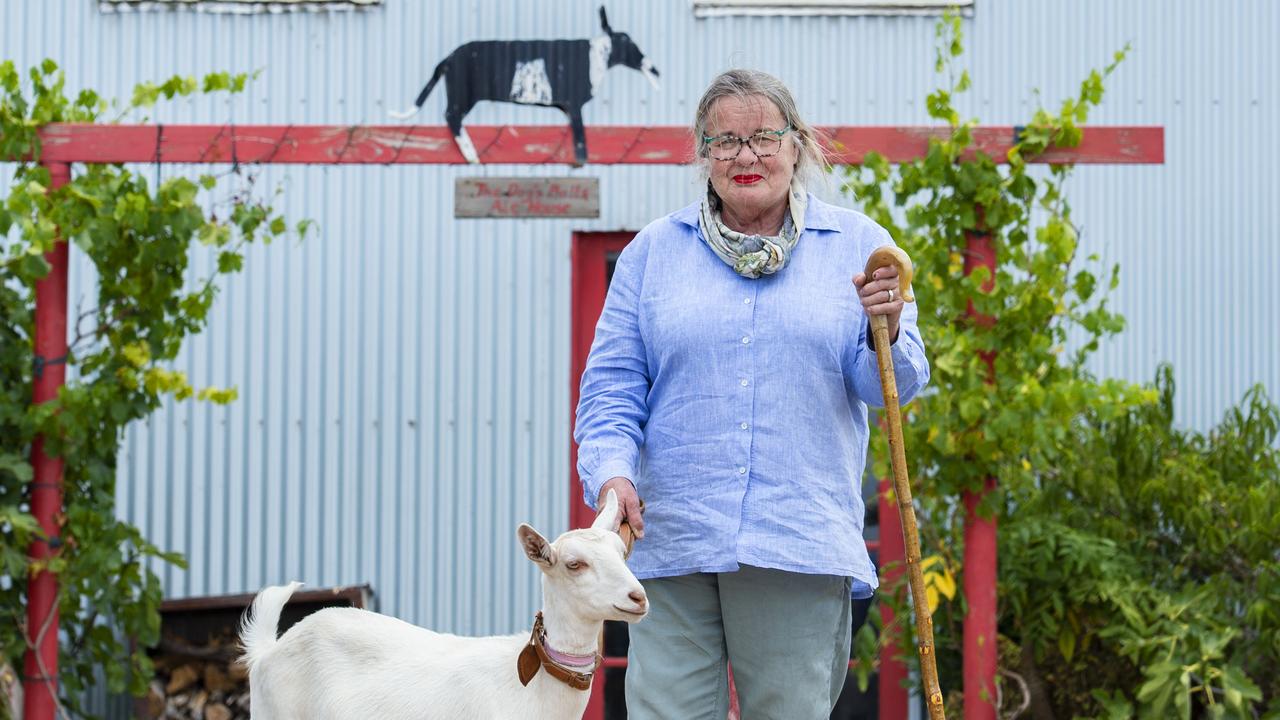Stephen King’s upcycling woodwork with Pallet Pieces Deniliquin
When he spotted a pile of wood pallets destined for the tip, Stephen King saw more than rubbish. This is what he can transform them into.

DENILIQUIN’S Stephen King was headed to a local fishing spot when a new opportunity came out of the woodwork.
On the way to his friend’s place to drop a line, Stephen spotted a pile of wooden pallets at a tip that were destined to be burnt.
“I thought, what a waste. So I actually picked up a few and brought them home,” he says.
“I had a bit of trouble getting them apart so I thought maybe I should just take them back to the tip.
“But then a friend put me on to this little apparatus that they use to break them apart, and I built one.”
That was the beginning of how an accountant of 30 years began crunching numbers more related to geometry.

And now, Stephen’s hobby of making pieces mostly for himself, friends and family out of the recycled wood has grown into a business, called Pallet Pieces — Deniliquin.
One of his first creations was a meat safe, inspired by and modelled on one in the house. Since then he has made everything from a tallboy, bedhead and laundry unit to dice and a scrabble board. He is currently working on some table numbers for a hotel, and making a seat using a combination of pallet wood and an old bedhead.
These days, rather than making items to sell, he mostly makes pieces by commission — he has recently finished a dovecot (a bird house for pigeons or doves).
“It’s changed over the years,” Stephen says. “As I’ve got more of a following — on Facebook I’ve got well over 1000 followers now — every now and again someone will ring up and say ‘could you make one of these for me?’”

He says there are businesses that keep pallets aside for him to use, so costs for the materials are fairly limited (“apart from buying a box of stubbies or something every now and again”).
However, using recycled wood does mean he has to invest time to get it to a usable state — removing nails (which he tries to reuse), sanding it down, and cutting it to the right size to get different pieces to match, for example.
Some pallets are difficult to pull apart, or the wood will split when they do, but Stephen says he is a good judge on picking out the pallets he can use. Most of the wood he uses is pine, which he says is easier to work with.
“There are so many different sizes of pallets — you think of a standard pallet, which is about 1m x 1m, but there are long ones, short ones, thick ones, thin ones,” he says.
“There is a fella that builds sheds, and his roller doors come on a pallet. The pallets are about 5mm thick, so I use those as backings on cupboards.
“I try not to buy any timber.”
Stephen says he will leave the pallets out in the weather to develop colour, “so rather than just be a yellow pine colour they turn a weathered colour in the dust and rain and everything else”.
After that comes the challenge of figuring out which pieces can be worked in together.
“That’s part of the fun, trying to calculate how things go together,” says Stephen.
“The beauty of the pallets, once they’re weathered, is you can’t buy that timber off a building supplier, they don’t have it — that rugged look, with the lines where the beams have been across.”
MORE
JAPANESE MISO MADE HERE IN NEWLYN


